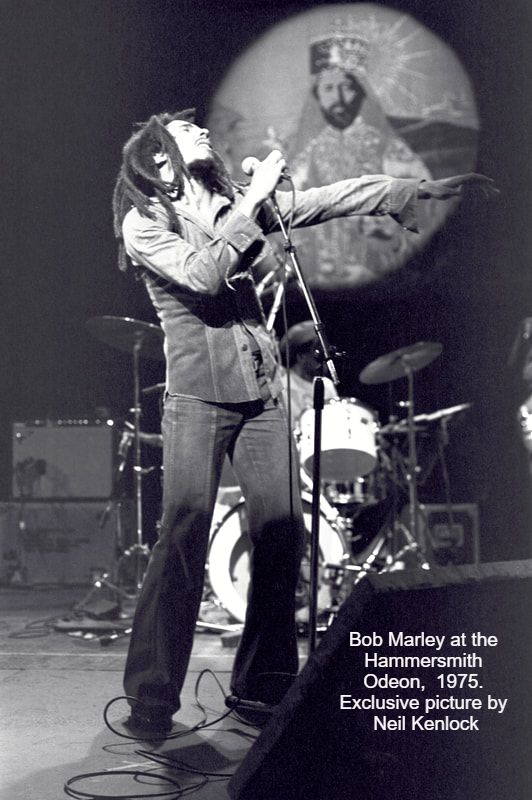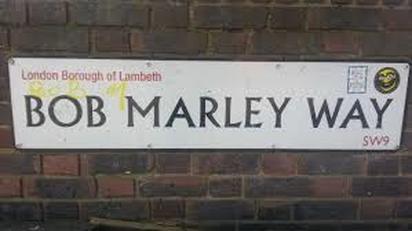Rastafari, Roots, Reggae
Bob Marley and the Wailers
In 1973, Bob Marley and the Wailers gave their first performance in the UK as a live in-studio gig for John Peel’s Top Gear Radio Show, broadcast on BBC Radio One. During this trip the band also visited the BBC’s Lime Grove Studios, a famed film studio complex in Shepherd’s Bush, West London, to record a live set for the late-night music show, The Old Grey Whistle Test. The Wailers were the first reggae act to feature on the influential television program. This performance introduced much of the British public to the roots-reggae genre, along with the uncompromising lyrics of a Rastafari musical troupe.

Bob Marley’s performances in the UK (as in other parts of the world) was nothing short of a ‘spiritual experience’. On stage he would enter a trance-like state to deliver the messages of social consciousness and Rastafari. The spontaneous dance energy that Bob exuded, accompanied by the professional harmonies of the ‘I Three’ backing singers fully attired in Rastafari outfits, enthralled onlookers.
Combined with the customary cultural stage backdrops - the Emperor's image, the Red, Gold and Green stage lighting - and the unrelenting musicianship of the Wailers band, an everlasting impression was left on the audience. Thousands turned out to see these various shows and Bob's presence in the UK during those years was simultaneous with the emerging Rastafari consciousness that was swelling throughout the country.
After the attempted assassination on his life prior to a Jamaican election, Bob relocated to London (1976-1978) in a self-imposed temporary exile that is in some ways reminiscent of the temporary exile of Haile Selassie I in Bath (1936-1940).

While resident in London, Bob wove his music into existing arts projects that sought to provide a fragile space of self-directed creativity for Britain's Black youth. For instance, Bob recorded the video for "Is this Love?" at the Keskidee Centre in Islington - Britain's first Black arts and culture venue. The video is notable for its disruption of the racial segregation and visceral hatred so common in Britain at the time.